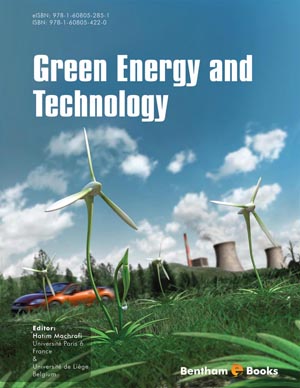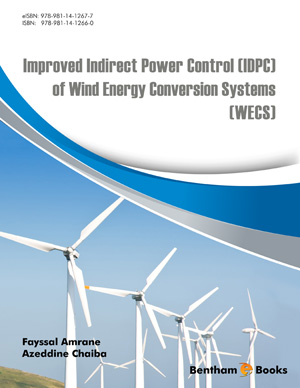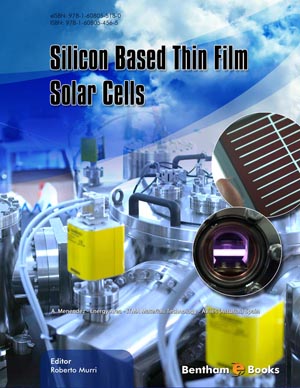Book Volume 2
Overview of Wind Energy Conversion Systems and Flexible AC Transmission Systems
Page: 1-16 (16)
Author: Ahmed Abu-Siada, Mohammad A. S. Masoum, Yasser Alharbi, Farhad Shahnia and A. M. Shiddiq Yunus
DOI: 10.2174/9781681085425117020002
PDF Price: $15
Abstract
Flexible AC transmission system (FACTS) is a technology that consists of a variety of power electronic devices which was developed with the aim of controlling both power and voltage at certain locations of the electricity grids during disturbances, improving the existing transmission line capacity and providing a controllable power flow for a selected transmission direction. This chapter provides a general overview for variable FACTS devices, concepts and topologies. It also provides brief information about various wind energy conversion systems.
Applications of Unified Power Flow Controller in Wind Energy Conversion System
Page: 17-48 (32)
Author: Ahmed Abu-Siada, Mohammad A. S. Masoum, Yasser Alharbi, Farhad Shahnia and A. M. Shiddiq Yunus
DOI: 10.2174/9781681085425117020003
PDF Price: $15
Abstract
Unified power flow controller (UPFC) is one of the Flexible ac Transmission System (FACTS) devices that possess the ability of modulating both active and reactive power at the point of common coupling in four quadrant operational modes. This chapter illustrates UPFC topology, controllers with some case studies for various applications of UPFC in the DFIG-based WECS. New applications for UPFC are proposed to improve the overall performance of a DFIG-based WECS during voltage sag and voltage swell events at the grid side.
Superconducting Magnetic Energy Storage, a Promising FACTS Device for Wind Energy Conversion Systems
Page: 49-86 (38)
Author: Ahmed Abu-Siada, Mohammad A. S. Masoum, Yasser Alharbi, Farhad Shahnia and A. M. Shiddiq Yunus
DOI: 10.2174/9781681085425117020004
PDF Price: $15
Abstract
The applications of FACTS devices have become popular in the last few decades. There are many types of FACTS devices that are currently used in power systems to improve system stability, power quality and the overall reliability of the power systems. Since the involvement of renewable energies based power plants such as wind and PV, problems related to power system stability and quality has become even more complex, therefore the deployment of FACTS devices has become a challenging task. In this chapter, a Superconducting Magnetic Energy Storage (SMES) Unit is applied to improve the performance of Doubly Fed Induction Generator (DFIG) based wind turbine during various disturbances such as voltage sag, short circuit faults and load variation, including problems related to internal faults within the DFIG converters.
Distribution Static Compensators and their Applications in Microgrids
Page: 87-141 (55)
Author: Ahmed Abu-Siada, Mohammad A. S. Masoum, Yasser Alharbi, Farhad Shahnia and A .M. Shiddiq Yunus
DOI: 10.2174/9781681085425117020005
PDF Price: $15
Abstract
Microgrids are clusters of distributed energy resources, energy storage systems and loads which are capable of operating in grid-connected as well as in offgrid modes. In the off-grid mode, the energy resources supply the demand while maintaining the voltage and frequency within acceptable limits whereas in the gridconnected mode, the energy resources supply the maximum or nominal power and the network voltage and frequency is maintained by the grid. This chapter first summarizes the structure and control principles of microgrids. It then briefly introduces the structures and control perspectives of distribution static compensators (DSTATCOMs). Finally, some applications of DSTATCOMs are discussed in microgrids. The introduced applications are power quality improvement due to the presence of nonlinear and unbalanced loads, voltage regulation and balancing, and interphase power circulation in the case of the presence of single-phase energy resources with unequal distribution amongst phases. Each application is illustrated by examples, realized in PSCAD/EMTDC.
Introduction
This book presents information about the application of various flexible AC transmission system devices to wind energy conversion systems. Devices such as unified power flow controllers, superconducting magnetic energy storage and static synchronous compensators are covered in this book. Chapters detail features of the topology and basic control systems of each device. Additionally, case studies are presented where necessary to demonstrate practical applications. This book is a reference for students and technicians studying wind power and AC transmission systems in advanced engineering courses.













